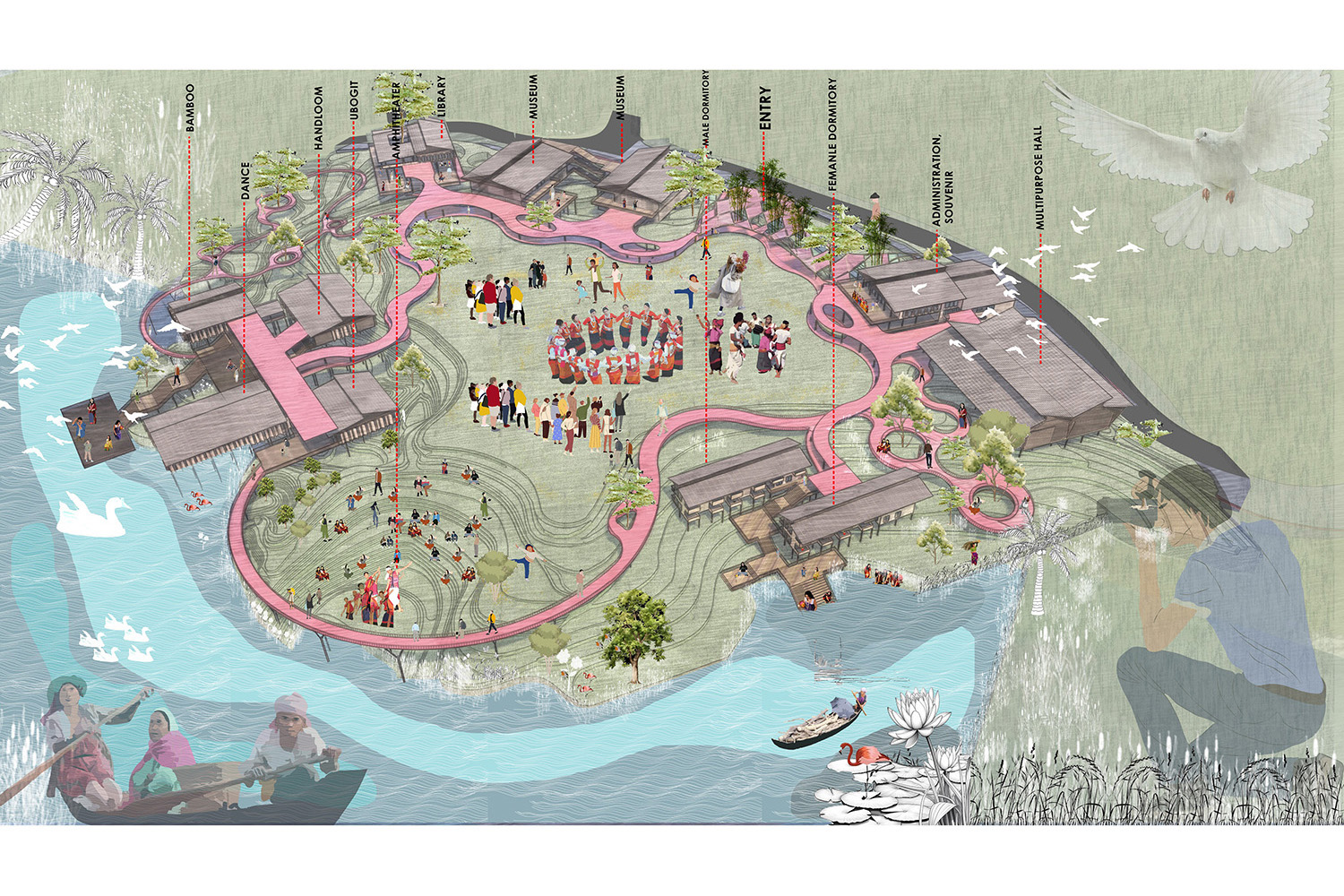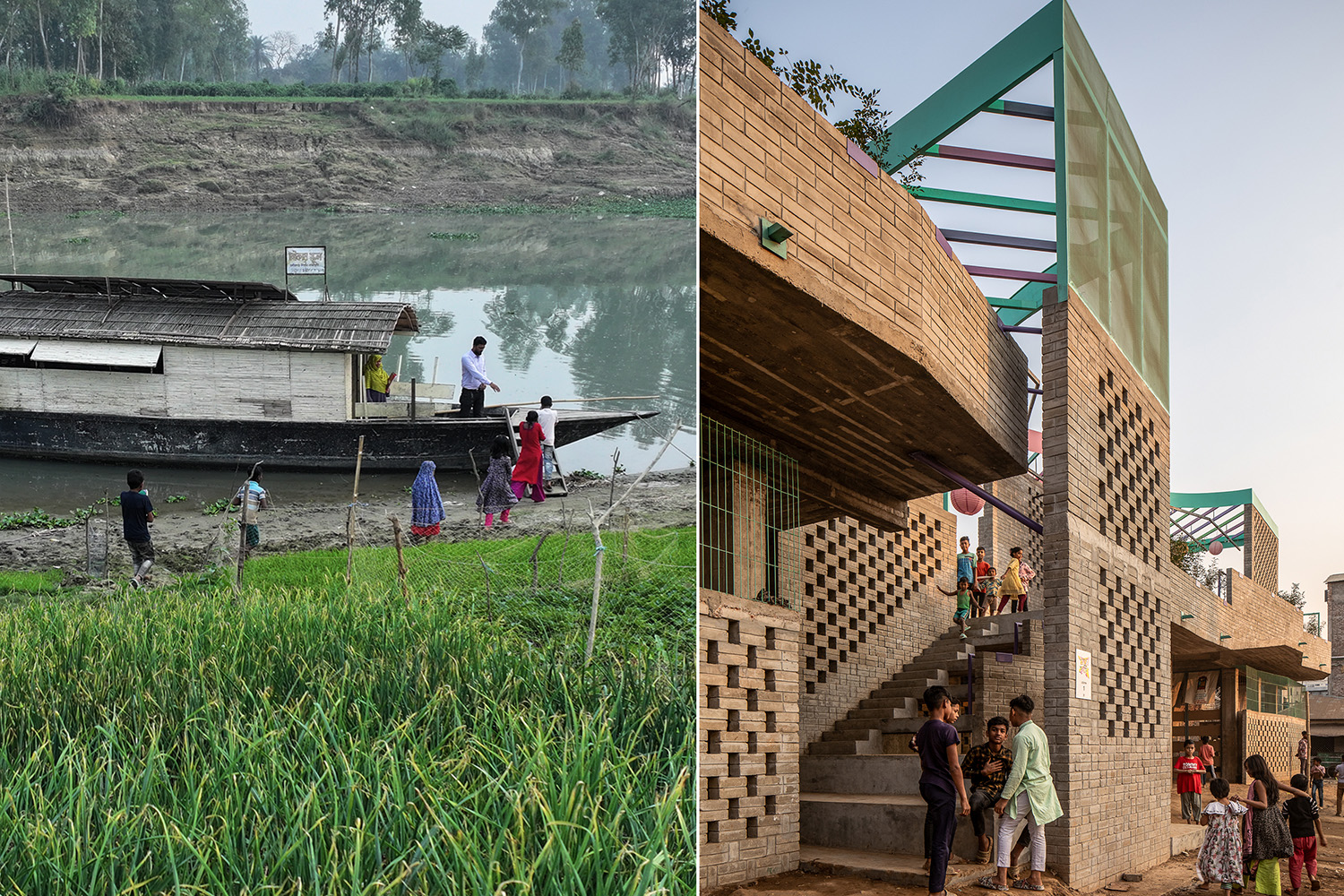Echoes of Aristocracy: Renewing Nagarpur’s Legacy

This project addresses the critical decay of the historic Nagarpur Zamindar Bari, a significant architectural landmark threatened by urbanization and neglect. Proposing a forward-thinking solution, it proposes adaptive reuse as a sustainable conservation strategy. The aim is to transform the decaying estate into a vibrant hub for cultural heritage and community engagement, carefully balancing historical authenticity with modern functionality. By reconnecting the monument to its socio-economic context, the project seeks to revive its lost identity, stimulate local opportunity, and establish a replicable model for preserving Bangladesh’s endangered heritage for future generations.
| From the submission |
The Nagarpur Chowdhury Zamindar Bari, established by Jadunath Chowdhury on a 54-acre estate, stands as a monumental relic of the Zamindari era. Its distinctive colonial architecture is a testament to a complex socio-economic history. However, decades of urbanization, socio-economic transition, and functional obsolescence have precipitated its decline, severing its connection to the community and threatening its physical integrity.

Conceptually, the project embraces the idea of “Balancing the Timeless Ties,” which refers to the delicate act of weaving the site’s historical narrative (the past) with the contemporary needs of its community (the present) to ensure its sustainable future. It moves beyond mere preservation to create a symbiotic relationship between the monument and its people. This approach revives the site’s lost identity by harmonizing conservation, adaptive reuse, and cultural engagement, ensuring the legacy of the Zamindari era remains a dynamic and relevant source of inspiration.



This project proposes a sustainable conservation strategy centered on adaptive reuse to rescue this fading heritage. The research employs a multidisciplinary methodology—integrating historical archival work, architectural condition analysis, stakeholder mapping, and community engagement—to develop a comprehensive revival framework. By diagnosing the site’s historical significance, structural state, and contemporary potential, the study formulates a strategy that protects its authentic essence while dynamically integrating it into the modern socio-economic fabric.






The ultimate vision is to transform the Zamindar Bari from a decaying monument into a vibrant hub for cultural heritage tourism and community activity. This initiative aims to reactivate the site’s economic potential, foster inclusive local engagement, and safeguard the intangible cultural heritage of the era. This project positions adaptive reuse not merely as a preservation tactic but as a strategic tool for sustainable urban development, ensuring historical treasures remain living, functional, and relevant. The restoration of Nagarpur Zamindar Bari can serve as a model for similar initiatives across Bangladesh, ensuring that the legacy of such sites continues to inspire and educate future generations.







